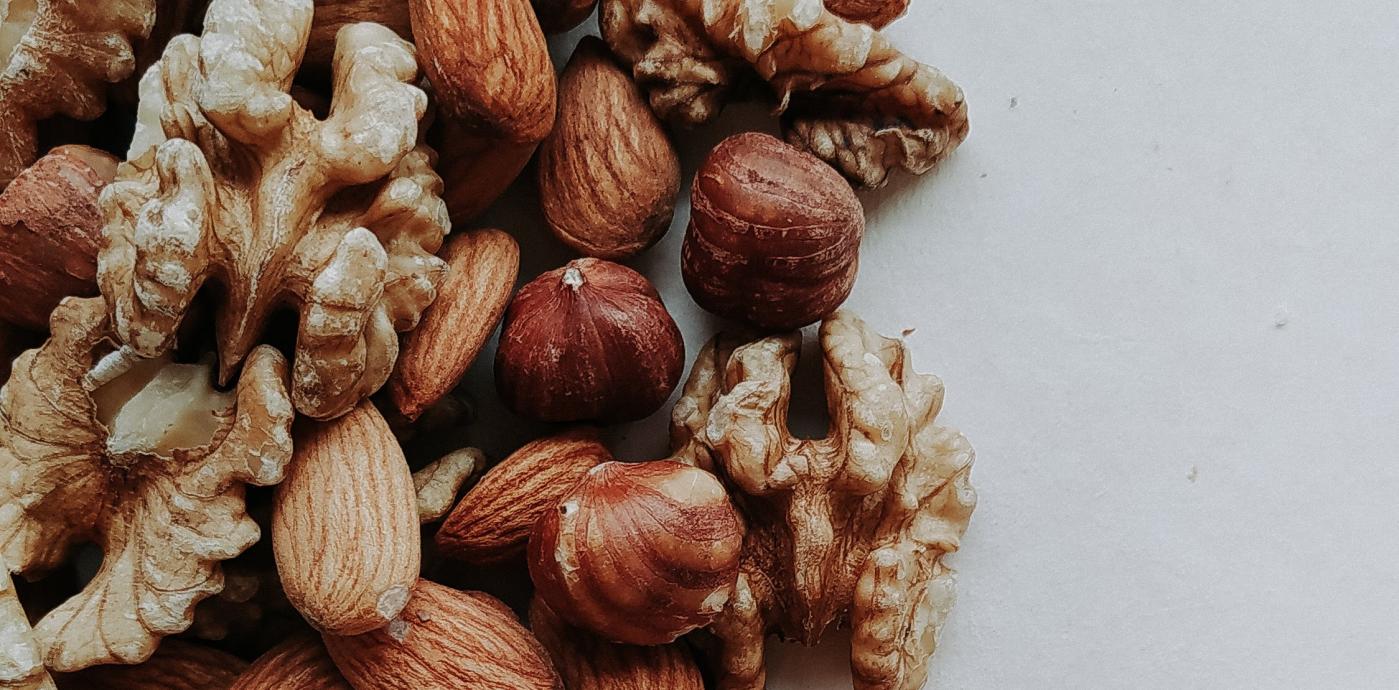Mediterranean nuts-almonds, chestnuts, hazelnuts, pine nuts, pistachios, and walnuts-are nutrient-dense foods that offer heart-healthy unsaturated fatty acids, protein, fiber, vitamins, minerals, and polyphenols (antioxidants found in plants). While today we might think about simply snacking on a handful of nuts for sustenance, they are an essential part of Mediterranean culinary traditions, intricately woven into the fabric of recipes to add depth of flavor and heartiness to a plethora of dishes.
A sauce can be the foundation of any good meal. It can elevate a dish from bland to exciting. Spanish picada is a dense, pounded paste of fried bread, nuts (typically almonds), garlic, olive oil and other aromatics. It originated in the Catalonia region of Spain as a way to thicken and flavor any number of stews and braises, such as suquet, a hearty Catalan fish/seafood stew. Spain’s romesco sauce is another thick and hearty sauce that combines roasted tomatoes and garlic, toasted nuts (almonds, pine nuts, or hazelnuts), olive oil, dried peppers (nyora peppers) and a splash of sherry vinegar-resulting in a deep, flavorful, roasty sauce that pairs exceptionally well with vegetables and fish. Nuts are not just limited to sauces. Ajoblanco, or white gazpacho, is a traditional, chilled summer soup (from Malaga, Spain) made from almonds, bread, garlic, olive oil and a splash of vinegar, then topped with green grapes.
Buttery, sweet pine nuts are a staple of Italian cooking. We’re probably most acquainted with green pesto, pesto alla Genovese (from Genoa, in the Liguria region of Italy), an exquisite, aromatic mix of pounded basil, pine nuts, Parmigianno Reggiano, and olive oil. But there’s also a red version, pesto rosso, which combines sun-dried tomatoes, roasted red peppers, pine nuts, cheese, and olive oil. Another classic Ligurian pesto, salsa di noci, although less well-known, features walnuts instead of pine nuts. It’s often tossed with pasta or simply served as a dip or spread.
Pesto alla trapanese is Sicily’s answer to Liguria’s more famous basil-rich pesto sauce, though instead of Ligurian pine nuts, the Sicilian version is a blend of almonds and fresh tomatoes. It’s typically served with a corkscrew shaped pasta, referred to as busiati. You’ll also find nuts in other classic Sicilian dishes, for instance, pasta con le sarde (pasta with sardines with fennel and pine nuts), sarde a beccafico (sardines stuffed with pine nuts, raisins and breadcrumbs) and the refreshing Sicilian frozen treat, granita, offered in flavors such as almond and pistachio (both of which are utterly creamy, yet somehow dairy-free).
Chestnuts, once a fundamental ingredient of cucina povera (“cooking of the poor” or “peasant cooking”) for people in the mountains of Tuscany, remain a common ingredient in Italian cooking. When turned into flour, chestnuts becomes the basis for polenta and porridges, gnocchi, breads (e.g.,marocca), cakes (e.g., catagnaccio), fresh pasta, and pancakes or crepes (necci).
Venture further east and you’ll discover nuts in the Egyptian nut-and-spice blend known as dukkah, Lebanese muhammara (a red pepper and walnut spread spiked with pomegranate molasses), hashweh (a one-pot rice dish loaded with ground beef [or lamb], lots of toasted nuts and dried fruit) and a Persian chicken stew (fesenjan) cooked in a sauce of ground toasted walnuts and pomegranate molasses.
Of course, there are any number of Mediterranean sweets that include nuts. Perhaps the most famous and beloved, baklava. Not to be outdone, there’s Spanish (Galician) almond tart (tarta de Santiago, which uses almond flour and is naturally gluten-free); maamoul (buttery shortbread Middle Eastern cookies filled with a variety of fillings, including pistachio or walnut paste; their tops decorated with traditional carved wooden molds); Greek karidopita, a cake made from walnuts and covered in a sweet syrup; French bostock (brioche bread soaked in syrup and then layered with sweet almond paste); Italian frangipane (a sweet almond tart filling) and the famous Italian nutella (sweetened hazelnut cocoa spread).
Adding nuts and seeds to pasta dishes, fish, soups, sauces, vegetables, and even desserts is a delicious way to incorporate more protein, more fiber, more heart-healthy fats, and most importantly, more flavor. With the Mediterranean Diet as your guide, it is easy to go nuts for nuts!
Want biweekly Med Diet information and recipes in your Inbox? Sign up for our Fresh Fridays newsletter by clicking the Subscribe button at the bottom of this page!
Join the Make Every Day Mediterranean Club Facebook group for additional information and support.






